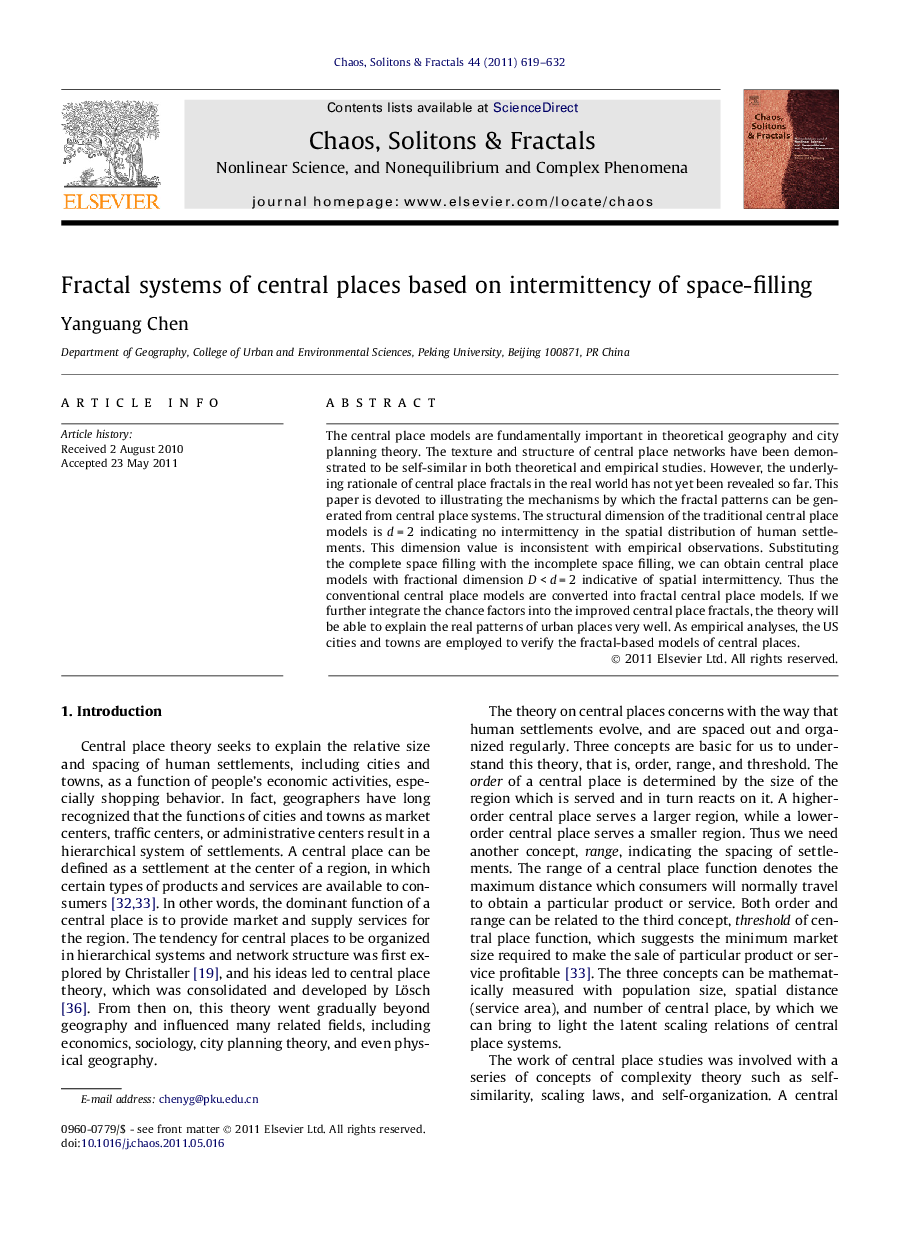| کد مقاله | کد نشریه | سال انتشار | مقاله انگلیسی | نسخه تمام متن |
|---|---|---|---|---|
| 1889774 | 1043790 | 2011 | 14 صفحه PDF | دانلود رایگان |

The central place models are fundamentally important in theoretical geography and city planning theory. The texture and structure of central place networks have been demonstrated to be self-similar in both theoretical and empirical studies. However, the underlying rationale of central place fractals in the real world has not yet been revealed so far. This paper is devoted to illustrating the mechanisms by which the fractal patterns can be generated from central place systems. The structural dimension of the traditional central place models is d = 2 indicating no intermittency in the spatial distribution of human settlements. This dimension value is inconsistent with empirical observations. Substituting the complete space filling with the incomplete space filling, we can obtain central place models with fractional dimension D < d = 2 indicative of spatial intermittency. Thus the conventional central place models are converted into fractal central place models. If we further integrate the chance factors into the improved central place fractals, the theory will be able to explain the real patterns of urban places very well. As empirical analyses, the US cities and towns are employed to verify the fractal-based models of central places.
► The idea of intermittency is introduced into central place model.
► The revised central place model suggests incomplete space filling.
► New central place fractals are presented for urban analysis.
► The average nearest distance is proposed to estimate the fractal dimension.
► The concept of distance-based space is replaced by that of dimension-based space.
Journal: Chaos, Solitons & Fractals - Volume 44, Issue 8, August 2011, Pages 619–632